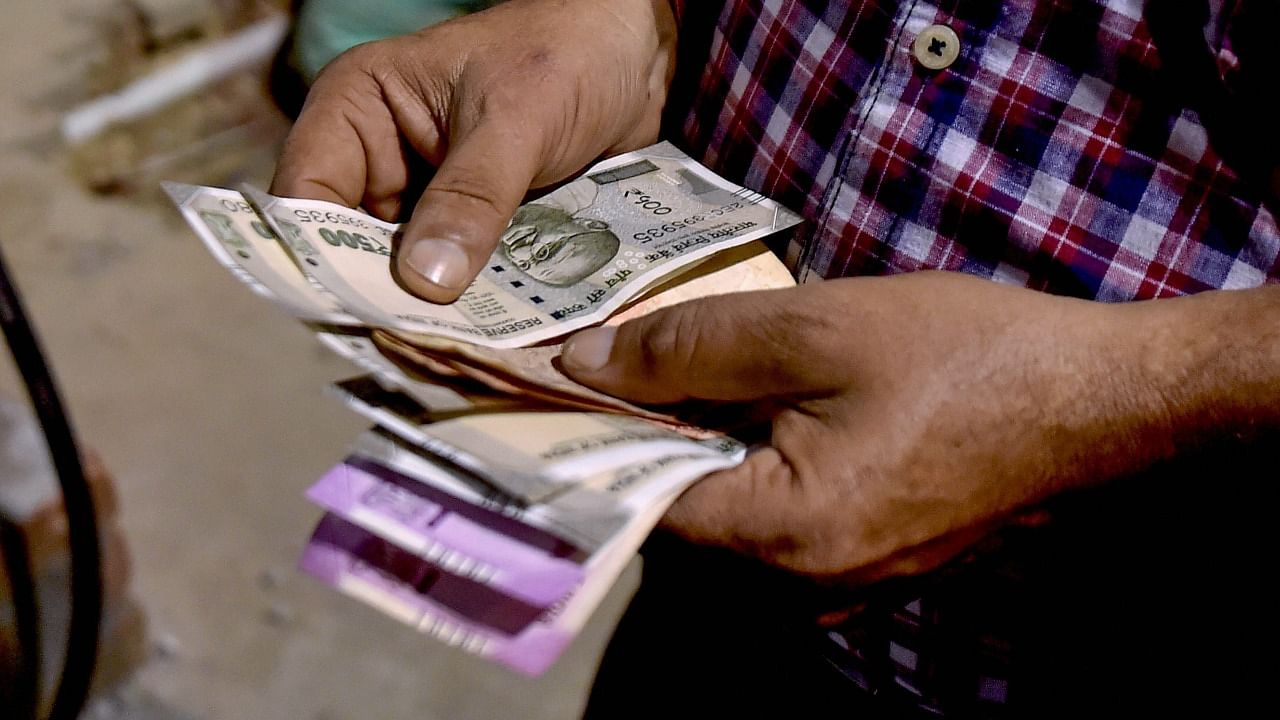
The Indian rupee, which fell to a record low against the dollar last week, is likely to depreciate further and settle at 78 by the end of September, according to 15 economists and currency analysts polled by DH.
A majority of them blamed it on the rise in crude oil prices tied to the Russian invasion of Ukraine. Russia is the second-largest oil producer in the world and India is the world’s third-largest importer of oil. The sharp surge in oil prices has threatened to push up inflation and widen India’s trade and current account deficits.
Some also worried about the US Federal Reserve’s plan to unveil its first post-pandemic interest rate hike this week.
“As Fed begins its policy tightening, FPI (foreign portfolio investment) outflows are likely to accelerate,” said Bank of Baroda economist Aditi Gupta.
Fed Chair Jerome Powell has made it amply clear that the US central bank intended to start raising interest rates “carefully” at its upcoming meeting even as it tried to strike a balance between high US inflation and the complex risks tied to the war in Europe.
Once the Fed pulls the liquidity plug, it would reverberate across all key central banks, which would in turn “embark on the monetary tightening path that will suck excess liquidity from the markets,” said Sugandha Sachdeva, Vice President - Commodity and Currency Research, Religare Broking.
The rupee, which touched an all-time low of Rs 76.98 per dollar on March 7, is Asia’s worst-performing currency in 2022 despite the aggressive support it has received from the Reserve Bank of India.
The rupee will be under near-term pressure “because of surging Brent crude oil prices amid the disruptions caused by the Russo-Ukrainian war,” Prasenjit K Basu, chief economist at ICICI Securities, told DH.
The conflict in Eastern Europe has pushed the US dollar to the highest level since May 2020 as investors flocked to safe havens amid uncertainty. To make things worse, prices of other commodities have also been climbing and this will inflate the import bill of India, which is Asia’s third-largest economy.
That said, it’s not all bad.
Most of the experts polled by DH expressed their confidence in RBI’s massive foreign exchange reserves which could be used to smoothen volatility. It was equal to about 14 months of imports, according to some estimates.
In addition, foreign currency denominated debt is relatively low in India, some said.
“Nonetheless, both of these factors probably won’t be enough to prevent the value of the rupee from sliding in the coming months,” cautioned Rabobank economist Wouter van Eijkelenburg.
Other cushions that could soften the blow for the Indian rupee included the planned initial public offering of the Life Insurance Corporation of India and the probable lifting of Iranian sanctions that could boost global oil supply.
Additionally, markets globally have bounced back after Ukraine’s President Volodymyr Zelenskyy said his country was not interested in joining the Nato alliance any more, a key demand of Russia.
Watch latest videos by DH here: